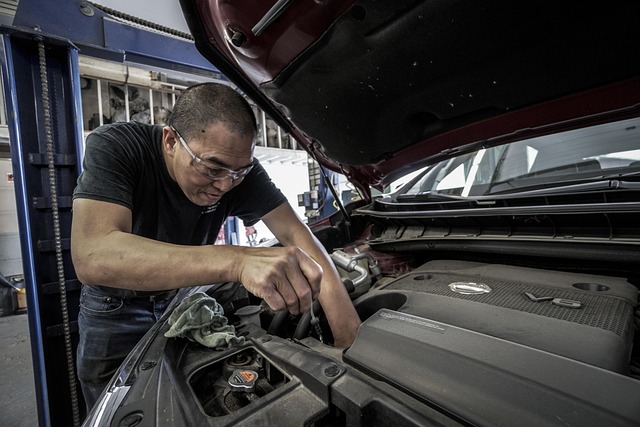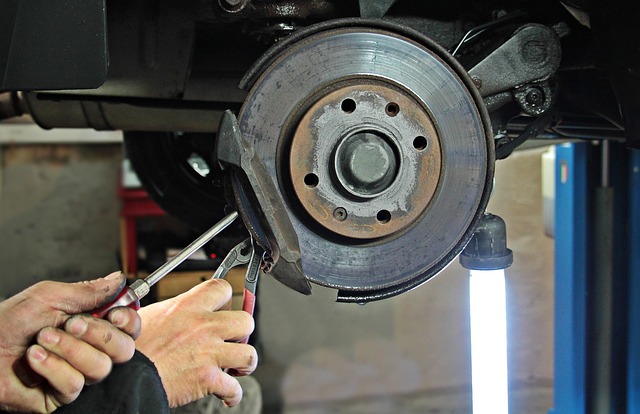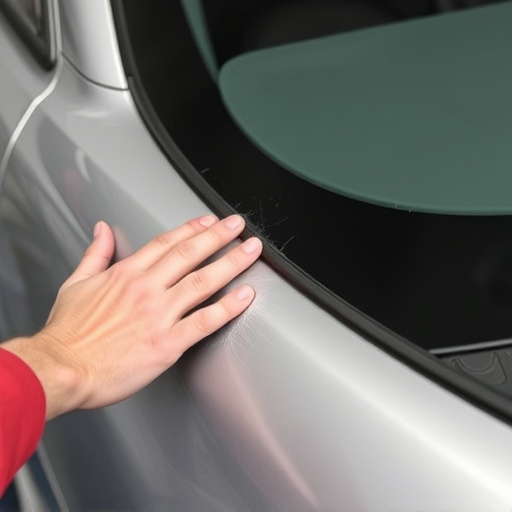Transparency in auto repair fosters trust and client satisfaction, leading to long-term business success. A strategic framework for a transparent repair process includes clear communication, detailed estimates, and real-time updates using simple language. Training technicians to answer queries effectively and offering modern repair techniques like paintless dent repair enhances the experience. Regular feedback collection refines this approach, encouraging clients to return and recommend the service, thereby boosting brand advocacy.
In today’s digital age, building strong client relationships is paramount for business success. One powerful strategy gaining traction is the implementation of a transparent repair process. This approach fosters trust and enhances satisfaction by providing clients with clear, open communication throughout the repair journey. By understanding the impact of transparency and following a structured guide, businesses can deliver exceptional service, encourage loyalty, and thrive in a competitive market. Discover how this transparent repair process becomes a key driver for long-term client relationships.
- Understanding the Impact of Transparency in Client Relationships
- Implementing a Transparent Repair Process: Step-by-Step Guide
- Benefits and Best Practices for Long-Term Client Satisfaction
Understanding the Impact of Transparency in Client Relationships

Transparency is a cornerstone of building strong, lasting client relationships in any industry. When it comes to auto repair and services like car paint or tire replacement (auto collision repair), clients appreciate honesty and openness about the work being done on their vehicles. This means clearly communicating the extent of damage, explaining repair processes step-by-step, and providing accurate estimates. A transparent repair process fosters trust, ensuring clients feel confident in the expertise of the shop’s technicians and the quality of their work.
By adopting a culture of transparency, auto repair businesses differentiate themselves from competitors who might skimp on details or hide potential costs. Satisfied clients are more likely to return for future services, recommend the business to others, and become advocates for the brand. This positive feedback loop is crucial for long-term success in any market, especially in a competitive industry like automotive care, where word-of-mouth recommendations carry significant weight.
Implementing a Transparent Repair Process: Step-by-Step Guide

Implementing a Transparent Repair Process requires a strategic approach that fosters trust and ensures client satisfaction. Here’s a step-by-step guide to help you navigate this process effectively. First, define your transparent repair process by outlining clear communication protocols, detailed estimates, and ongoing updates on the repair status. This involves using easy-to-understand language to explain auto body painting or automotive collision repair procedures, costs involved, and expected timelines.
Next, equip your team with the knowledge to answer client questions accurately. Training technicians in auto collision repair best practices and ensuring they’re adept at explaining each step of the process is crucial. Establish a user-friendly online platform where clients can access real-time updates, view before-and-after images, and track their vehicle’s progress. Regularly solicit feedback to refine your transparent repair process, demonstrating your commitment to delivering exceptional service and fostering long-term client relationships.
Benefits and Best Practices for Long-Term Client Satisfaction

Implementing a transparent repair process is a powerful strategy to foster long-term client satisfaction and build trust. By offering clear communication and detailed explanations throughout the repair journey, businesses can ensure clients understand the steps taken to restore their vehicles to pre-accident condition. This openness encourages transparency, a key factor in building strong relationships. Clients appreciate being kept informed, enabling them to feel involved and making any potential concerns or questions readily addressable.
Best practices include providing comprehensive estimates outlining costs and timelines, using modern repair techniques such as paintless dent repair for minimal impact repairs, and offering tire services as part of a holistic vehicle care package. Demonstrating expertise in fender repair and related services shows clients their vehicles are in capable hands. Regular updates during the repair process, coupled with a focus on quality and customer service, set the stage for satisfied clients who are more likely to return and recommend the business to others.
By adopting a transparent repair process, businesses can foster trust and strengthen client relationships. This approach, detailed in this article, includes clear communication, quick response times, and comprehensive reporting—all essential elements for building long-term satisfaction. By following the step-by-step guide and best practices outlined here, companies can ensure their clients receive exceptional service, ultimately leading to increased loyalty and positive word-of-mouth recommendations. The transparent repair process is a game-changer in customer relationship management, enhancing trust and ensuring client retention.













